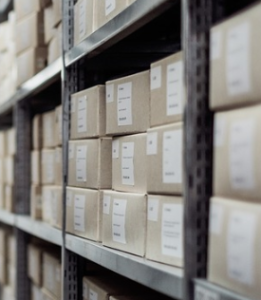Do you need a special form of packaging? Do you have specific requirements for your products and do you need a partner by your side to handle the packaging that complies with the directive? Companies that offer Contract Packing offer you a complete service, from the packaging unit to filling and storage.
What is Contract Packing and when is it implemented?
When talking about contract packing, it’s called contract packaging. There are pharmaceutical, chemical or other sophisticated products that require elaborate packaging. Raw materials and raw materials also require special packaging, e.g. prevents volatilization. Hygiene standards must sometimes be adhered to and appropriate operational measures must be taken. Contract packaging belongs to the field of packaging services and is carried out by subcontractors. The outsourced packaging area saves the company time and money, because the machines and bottling plants can only be operated with great expenditure of space, energy and time. Not infrequently, the Contract Packager also takes over the picking and packaging of the goods and stores the packaged consumer and durable goods.
Why is Contract Packing important?

If goods are shipped to other countries, then country-specific guidelines must be observed. For this reason, for example, it is important to offer a perfect Contract Packing. Often special packaging must be produced, some materials must be filled very gently or must maintain the constant temperature of the cold chain. Depending on the requirements you need for your product, Contract Packager has the right solution for you.
Does the Co Packager differ?
Yes, there are differences in the area of contract packaging. Depending on the size of the company, different methods can be used:
– Co Packaging for better utilization
There are certainly brand manufacturers who want to make better use of their packaging systems. In order to use the full capacity of the machine, the company accepts packaging orders from other brand manufacturers. Thus, the machine and plant park can be used more cheaply.
– Reorientation to the packaging service provider
In the area of manufacturing processes, there are companies that are reorienting themselves and choosing to concentrate entirely on the packaging industry.
– new name
If you choose a contractor, then you can fall back on new founders, in the field of contract packaging. The entrepreneurs specialize in packaging and have versatile ideas for implementation in stock.
– franchise
In the packaging industry, there are companies that bind themselves to companies and brands through a franchise agreement and specialize in contract packaging.
What are the benefits of using Contract Packing?
Get yourself a packaging specialist to the side, which packs your goods, products and products safely, standardized, compliant and according to country-specific requirements. Save on expensive machinery, bottling plants, energy and labor costs, and expensive packaging equipment, and have the demanding job done by a contract packing company. Read more at this page.
Alongside the products that are mentioned in the first paragraph, there are plenty of other things which require an adequate packaging. For example furnishing products have to be delivered safely to be used in your home. If you think about a japanese way of furnishing your home, you can check out the following pages to receive some detailed information about this specific style:
Change your home in a japanese house
Shousugiban – fire-treated wood